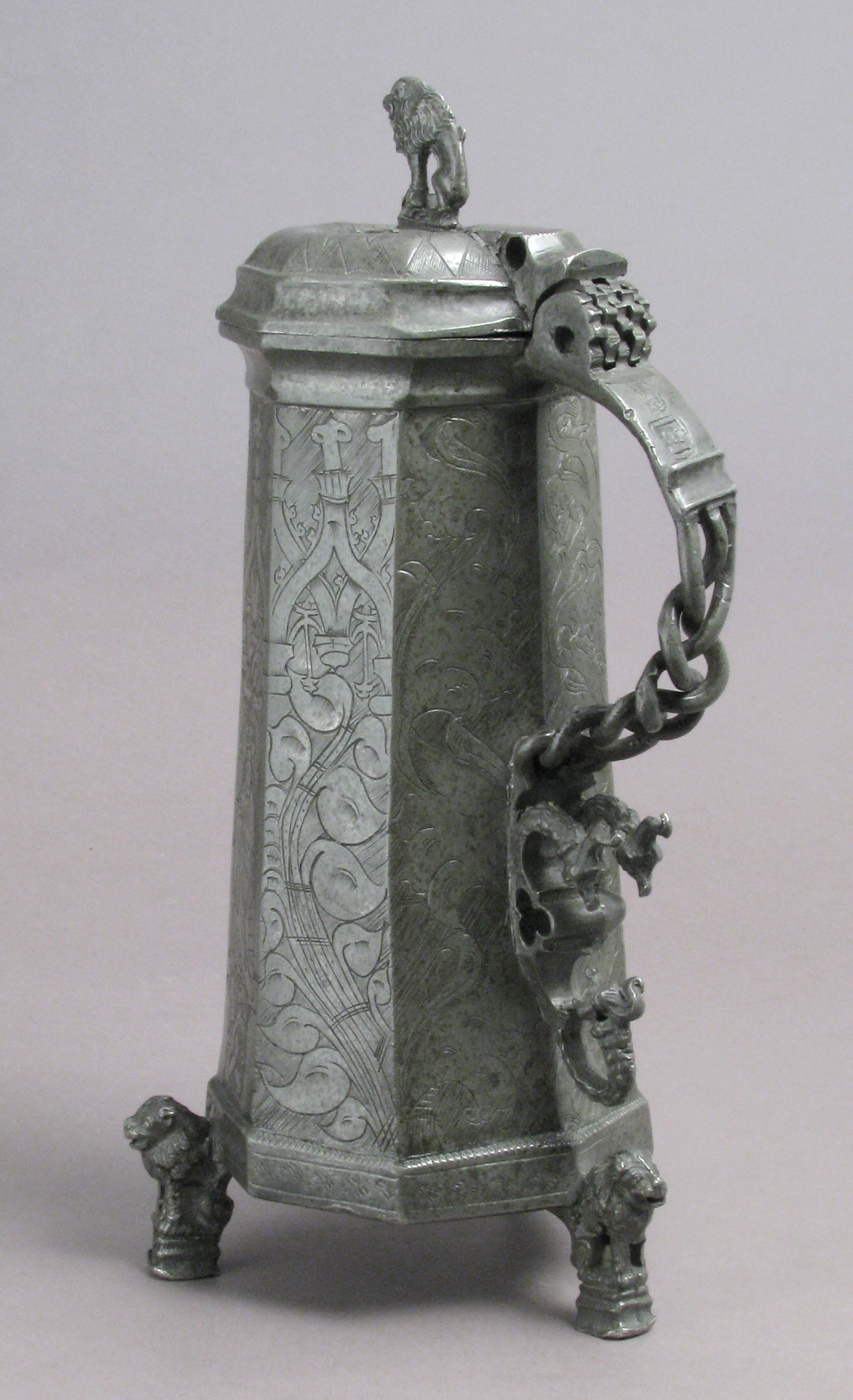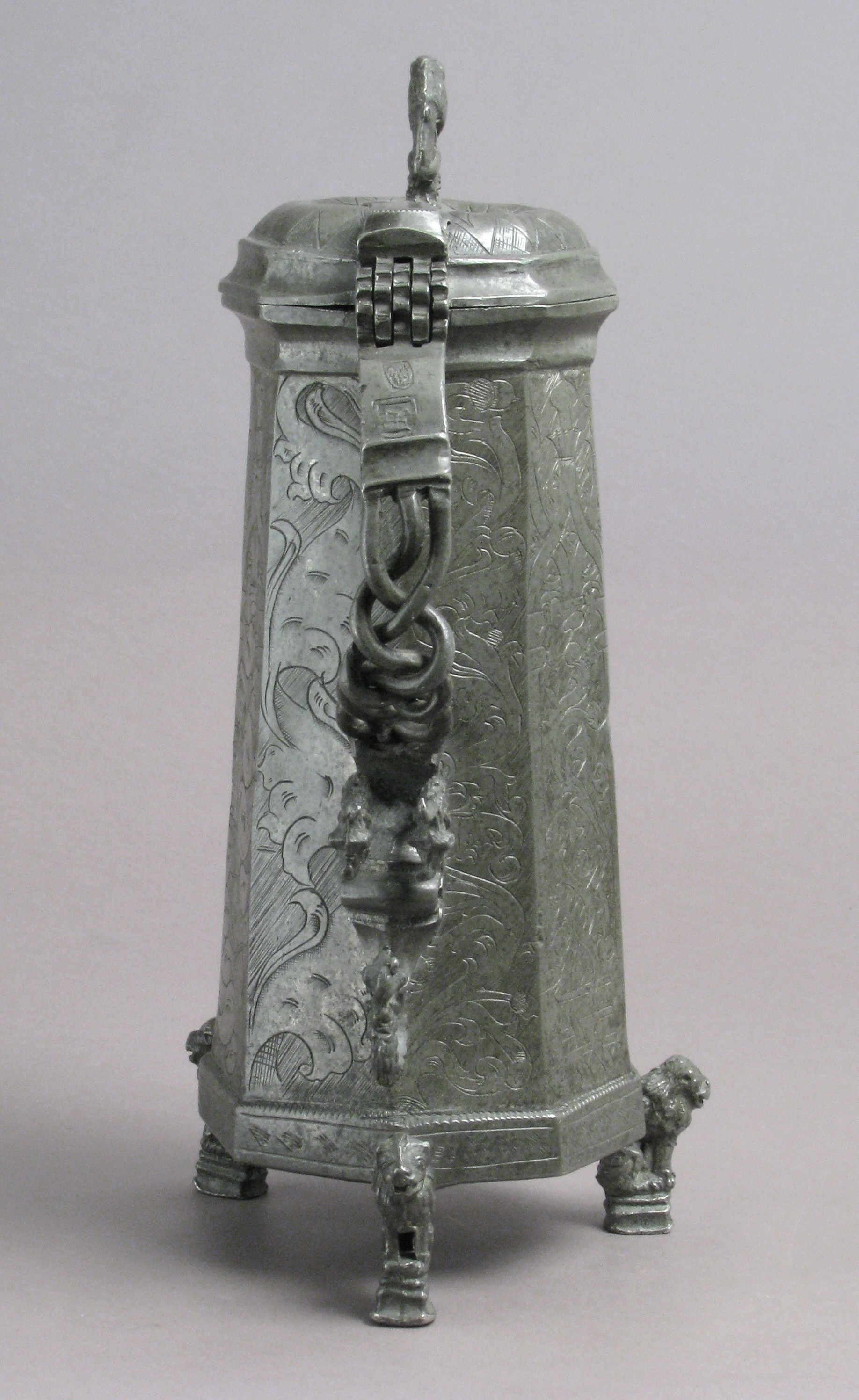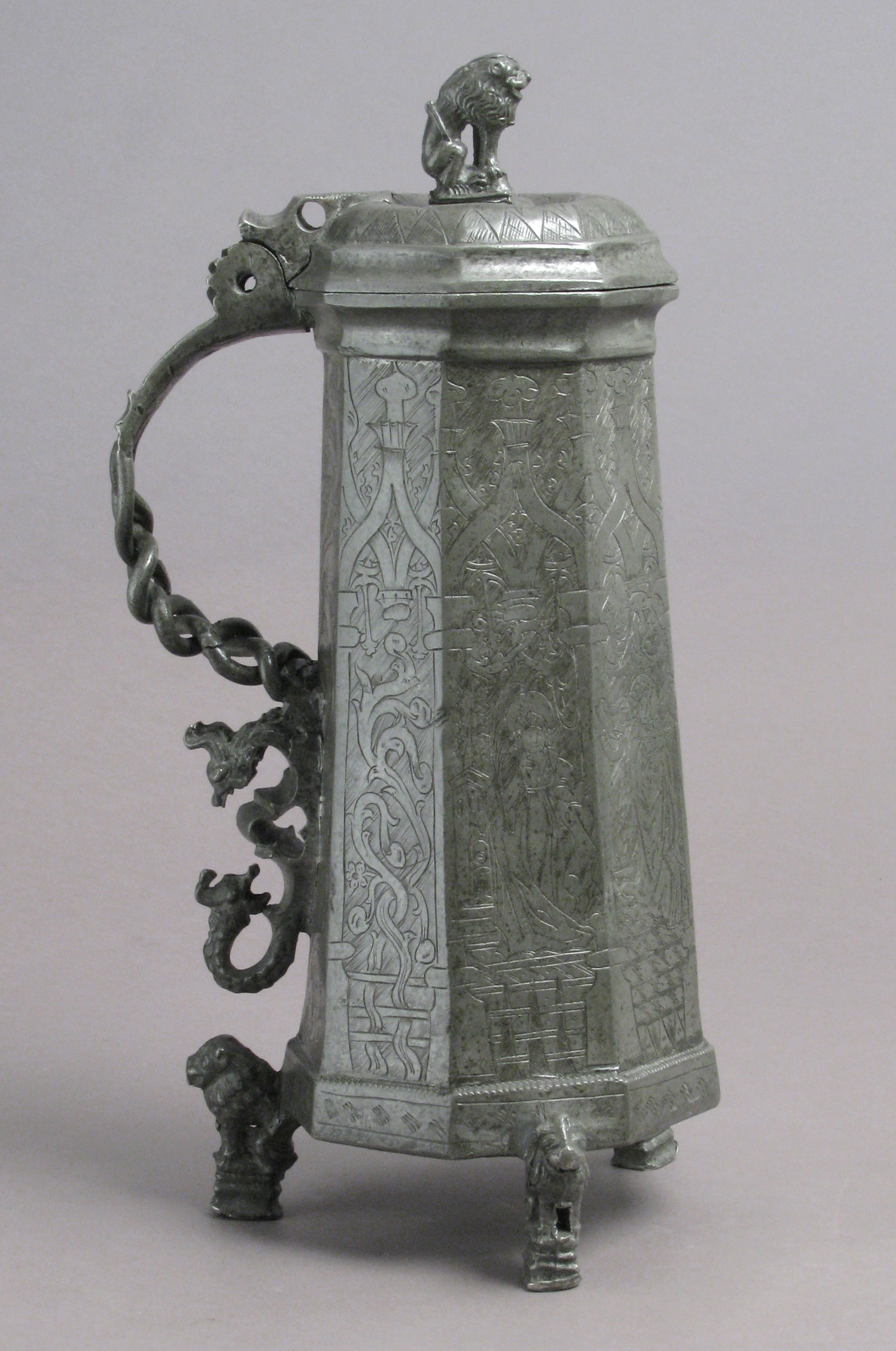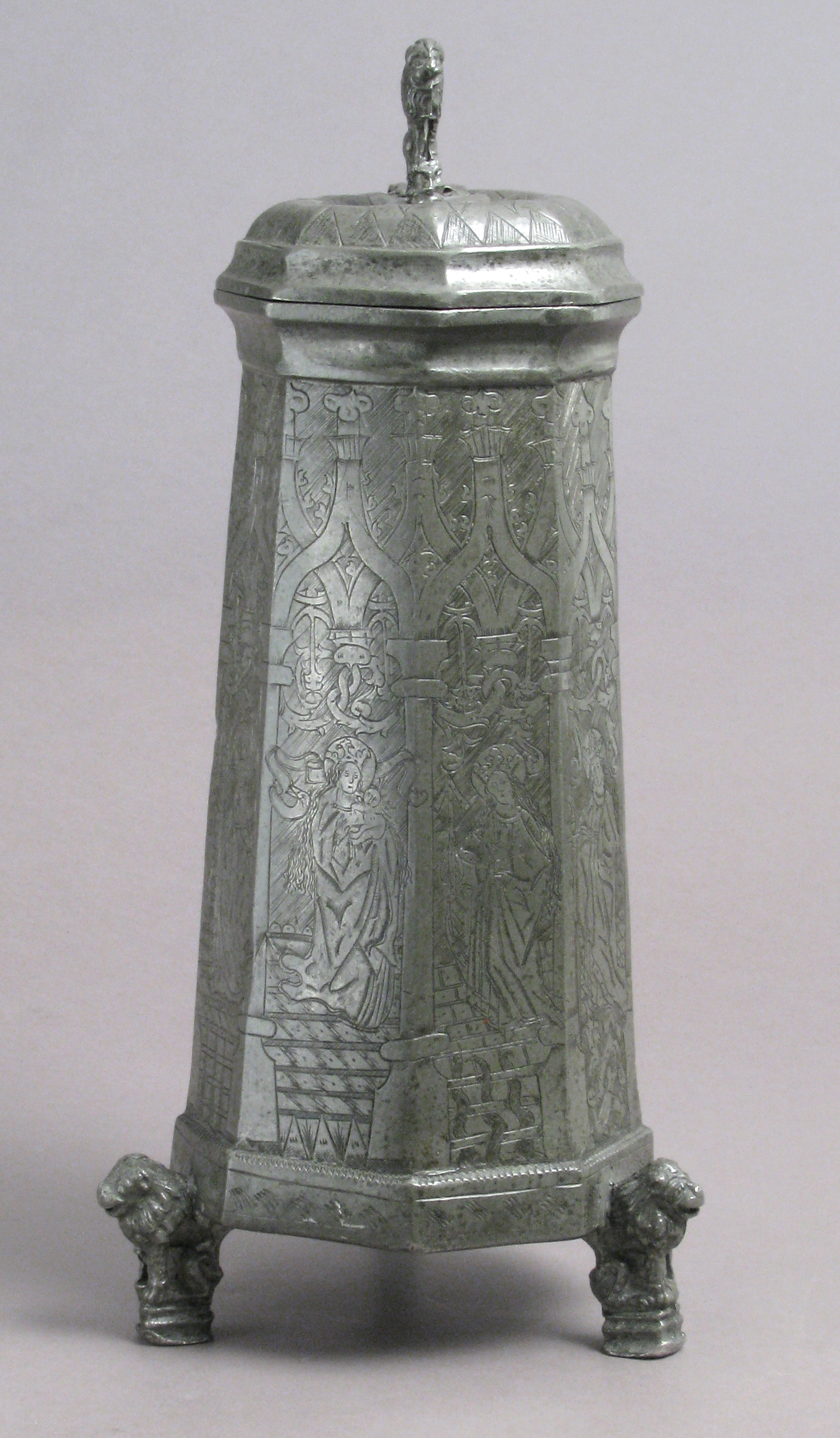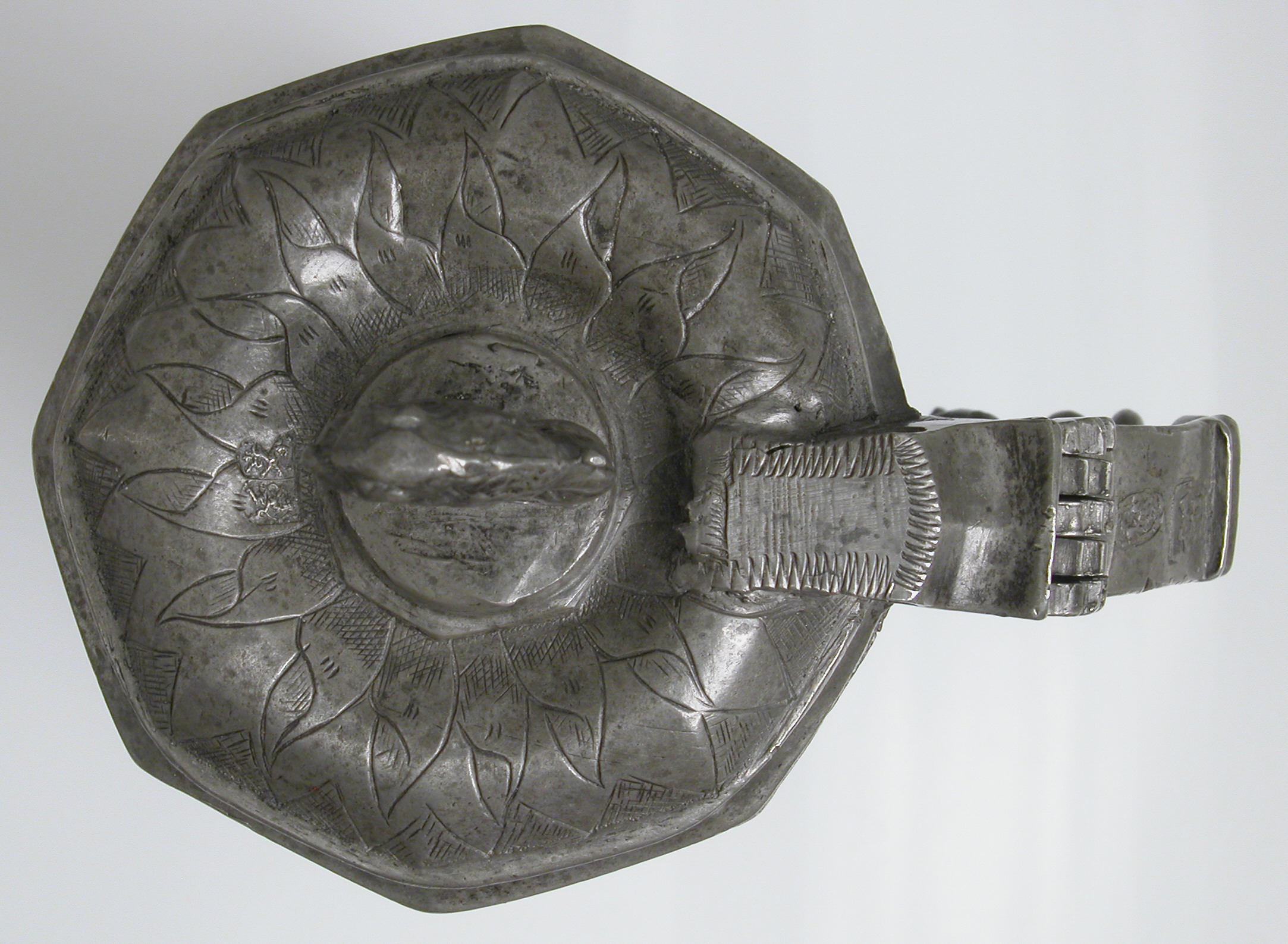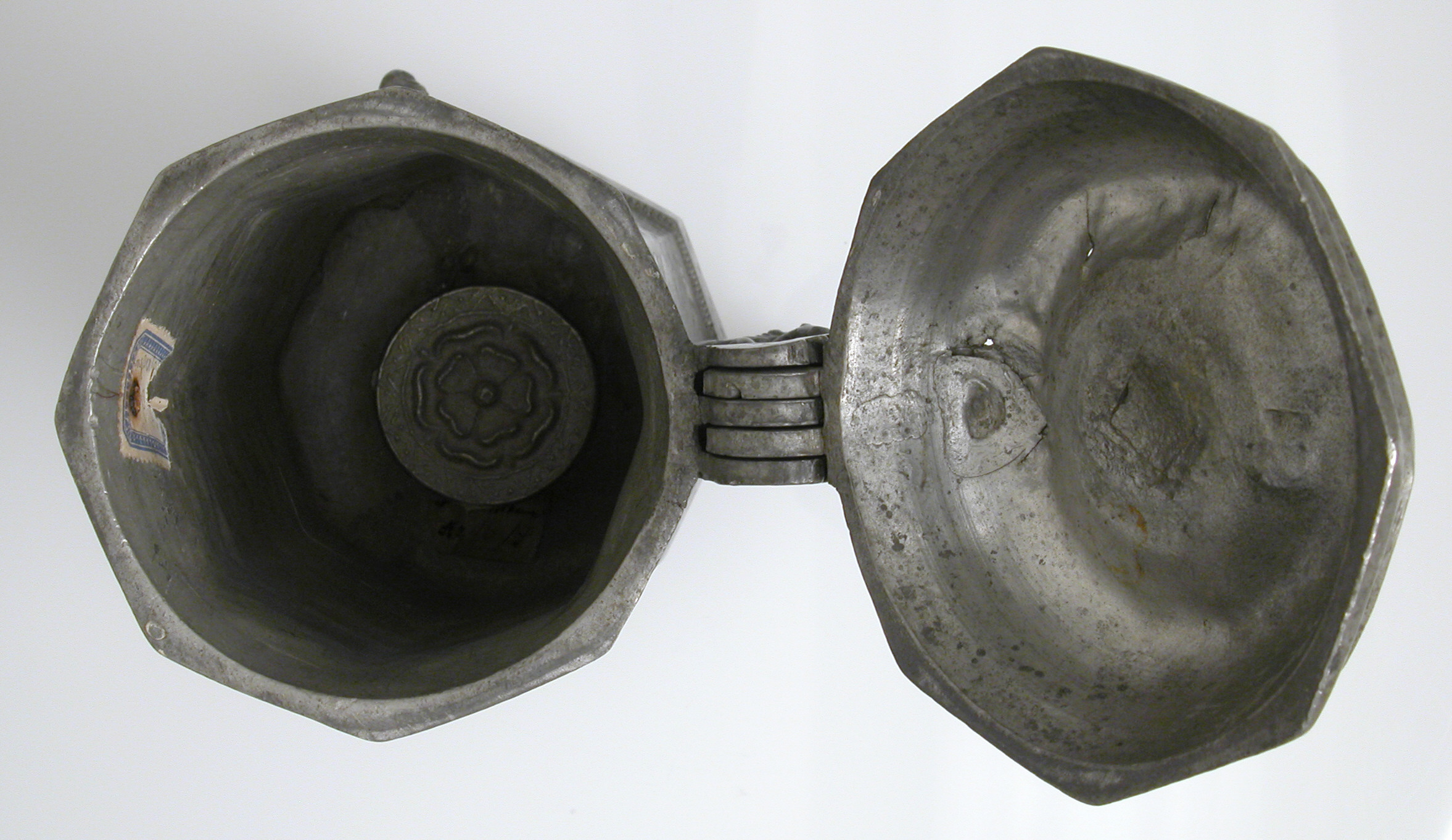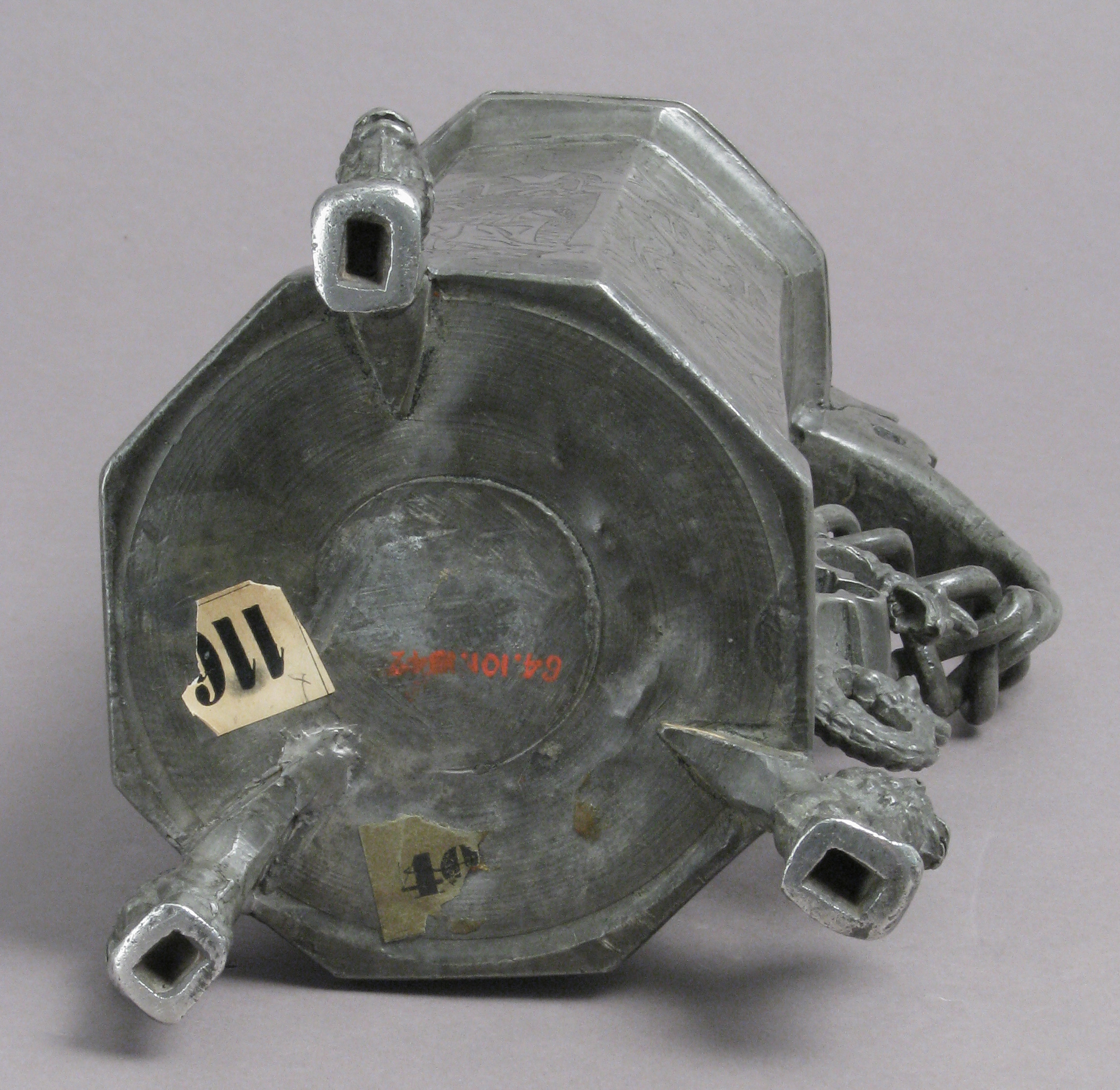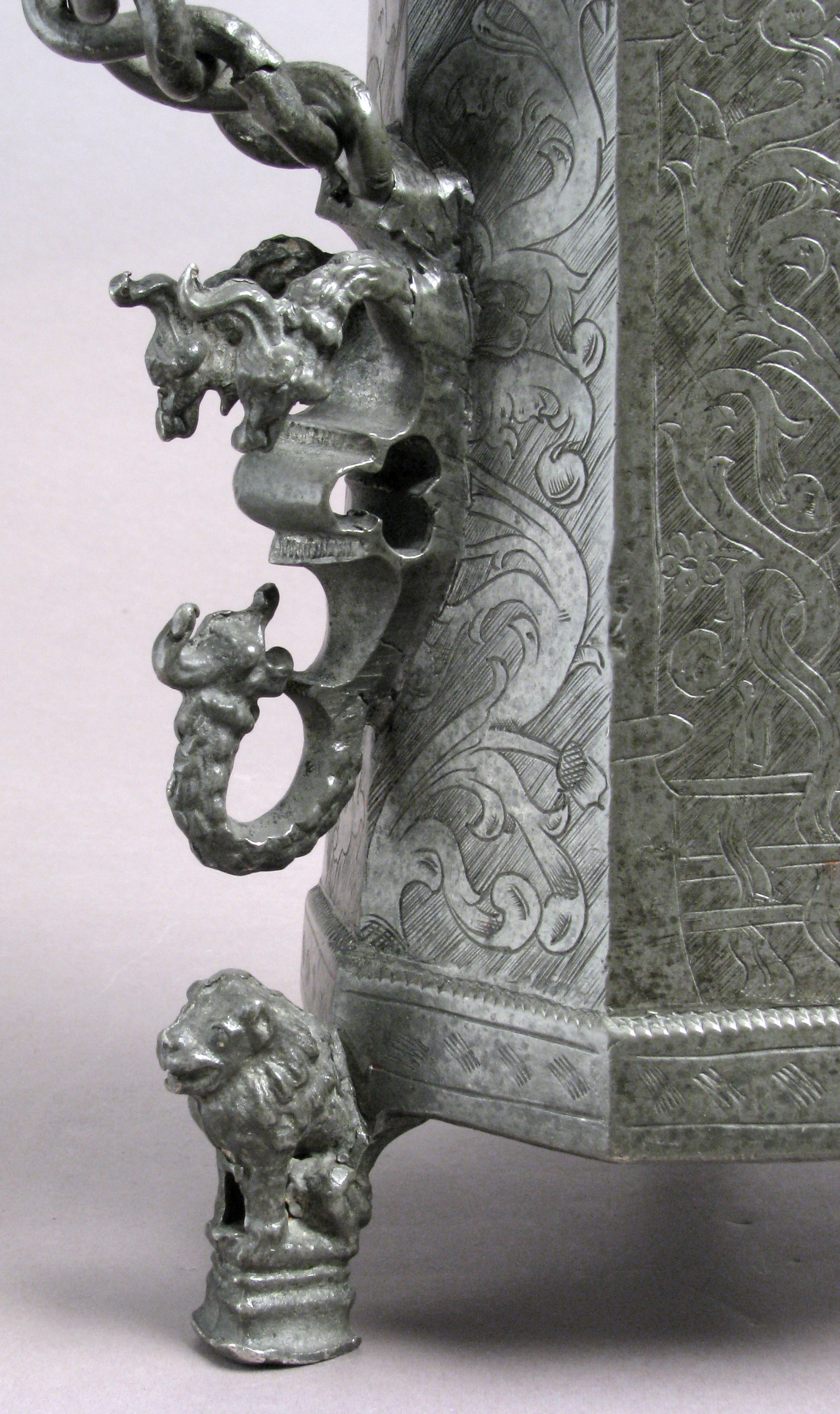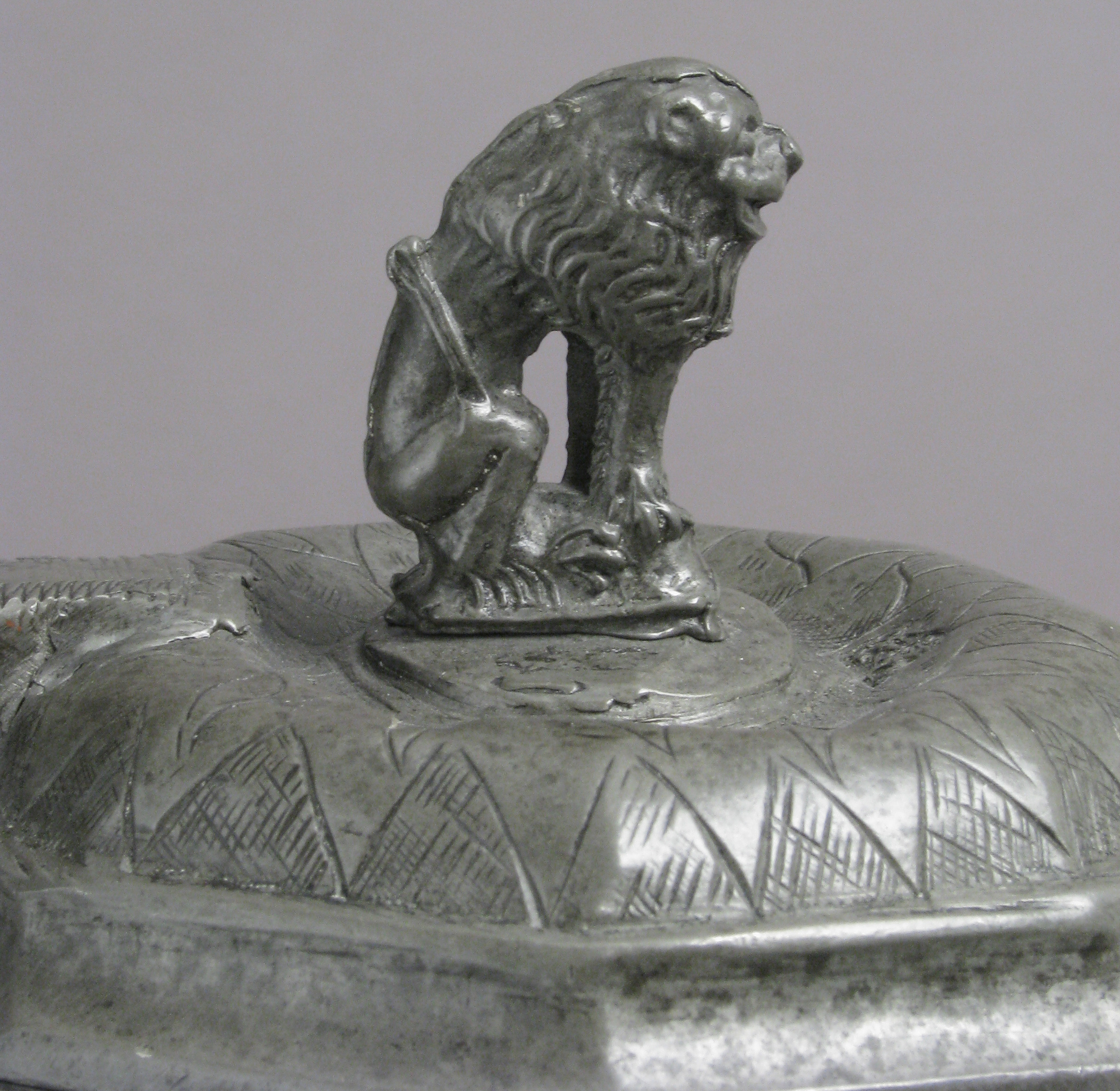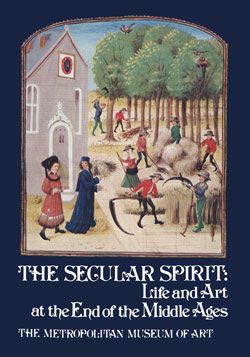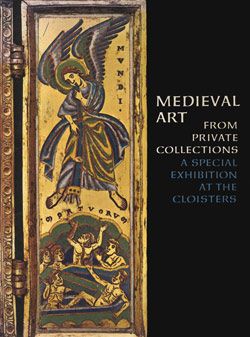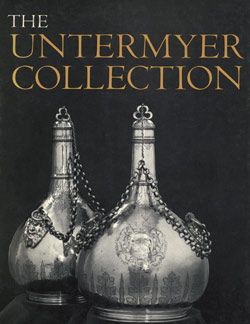Flagon
Although by the late fifteenth century, pewter vessels had come into sufficiently common usage as to be eschewed by the nobility who had once promoted them, they were by no means always relegated to strict utilitarian usage. This handsome flagon was used primarily for exhibition or ceremonial use. Although of a type related to the flagons of the Silesian school, especially in Breslau - several examples of which are extant - this particular flagon bears the town mark of Villach, located in present-day southern Austria. It has also been suggested that the piece was made in Lüneburg, in northern Germany, and subsequently marked in Villach. Whatever the place of origin, the high qualify of the engraving of the figures (derived in the style from the Master E.S.), the lack of wear, and particularly the nonutilitarian nature of the fantastic late Gothic braided handle, although designed for drinking, was ordinarily displayed on a cupboard.
Due to rights restrictions, this image cannot be enlarged, viewed at full screen, or downloaded.
This artwork is meant to be viewed from right to left. Scroll left to view more.


